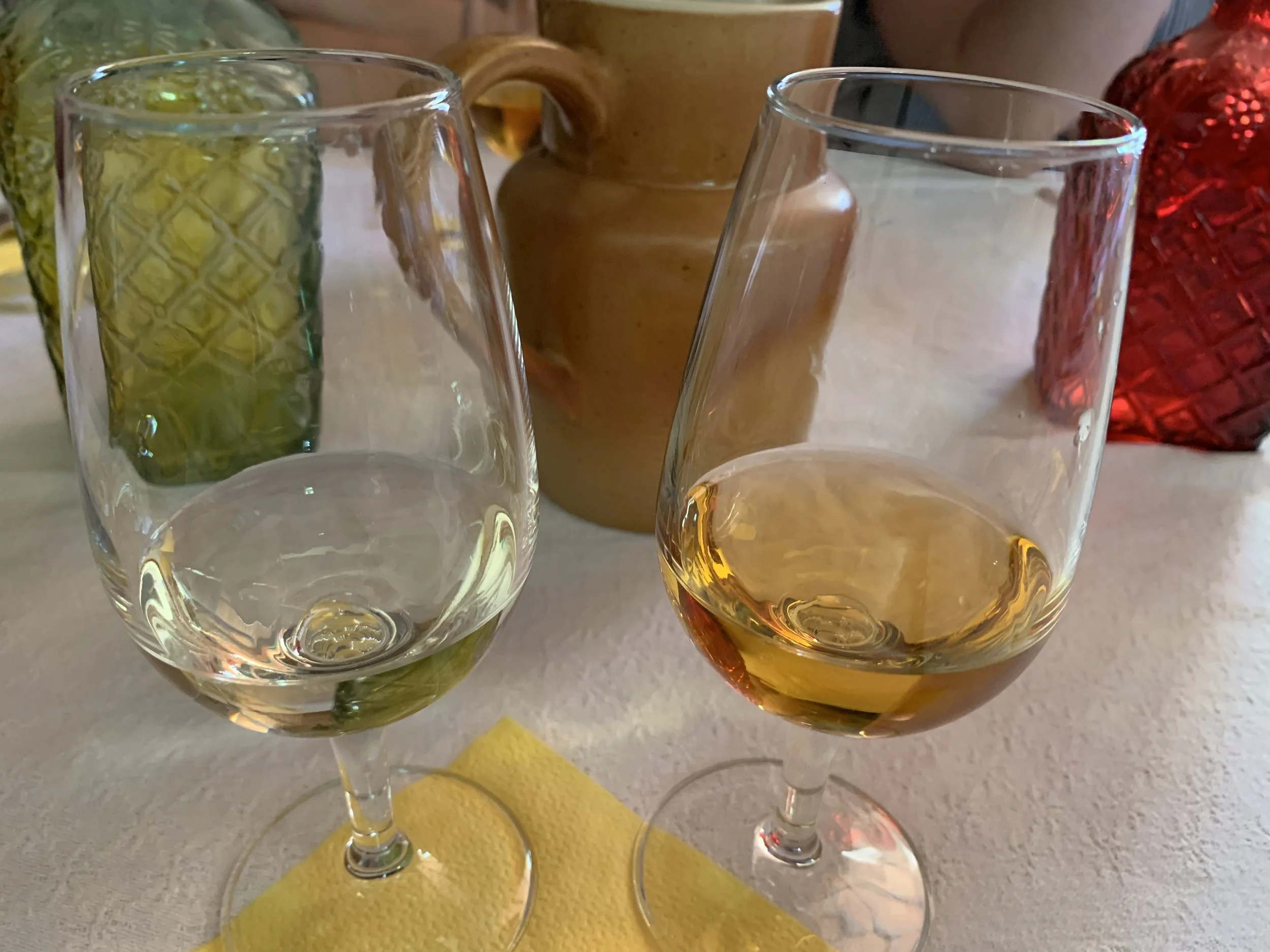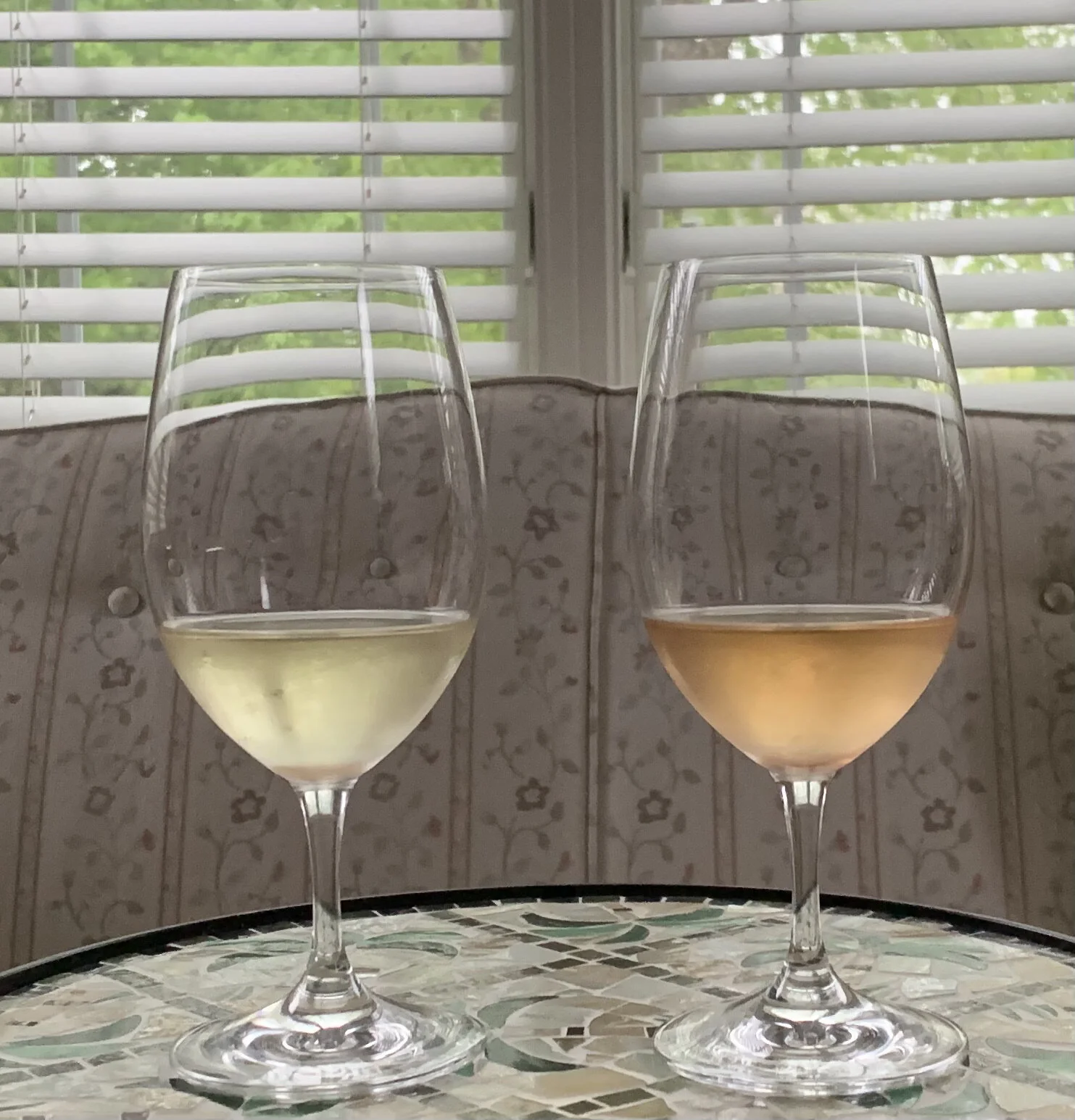Pinot Grigio's Success
Pinot Grigio's Success
Pinot Grigio, the Italian name for the grape Pinot Gris, often comes from northeastern Italy and is prized for its high acidity rather than the richness it is picked for in Alsace. There are different styles of Pinot Grigio throughout Italy. In Alto Adige the grape takes on a more mineral undertone with notes of peach and citrus because of its cooler climate. Friuli is a region that often shows more stone fruit and more richness because of the warmer temperatures. Many Italian Pinot Grigios are not as sophisticated as described above. One of the reasons for the success of Pinot Grigio is its taste and lack of complexity. Pinot Grigio overall is food friendly, has a light easy-going aroma, and is fruity on the palate. This style of Pinot Grigio was brought to light by the producers of Santa Margherita.
Until the late 1970s Pinot Grigio was virtually unknown. The grape was made into a copper-colored wine, known as 'ramato', which was purposely oxidized, or it was sent to Germany to make cheap sekt, German sparkling wine. The year that made history for Pinot Grigio was 1979. Tony Terlato, an Italian wine importer, went to Italy to find something new and came back with Santa Margherita Pinot Grigio. Tony, Anthony, knew how to sell wine to the American people. He introduced Santa Margherita Pinot Grigio through television commercials during the “Tonight Show” with Johnny Carson. Americans were infatuated and purchased the wine. “Santa Margherita is a crisp white wine that has floral aromatics and a pleasant mineral quality. It drinks quite easily with subtle citrus flavors and just a nice vestige of sweetness that does not overpower food.
As this light, crisp clean style of wine became more popular more wineries and cooperatives began to jump on the band wagon. Cantina Viticoltori Trentini (Cavit) was one of the first cooperatives in Italy to saddle up to meet demand. It became one of the largest producers in volume and exported approximately 180,00 cases in 2007. Sales continued to rise and more Pinot Grigio was needed. The cooperatives of Mezzacorona and Cavit were able to produce bulk amounts of wine because of their size. New plantings were added throughout Italy. Many of the new plantings were intentionally planted to reduce production costs. This was accomplished by planting Pinot Grigio vines on flat surfaces that were not up in the mountains so that the land could be mechanically harvested instead of hand harvested. As more Pinot Grigio was produced more Pinot Grigio sold. Between 1997 and 2011 Pinot Grigio consumption more than doubled from 110 million liters for export markets to 234 million liters. The clean crisp style of Pinot Grigio is enjoyed by many. The varietal consumption surpassed the intake of the White Zinfandel drinking public of the United States in 2010. In the United Kingdom sales of Pinot Grigio rose 30% in the late 2000s.
It seems the formula for Pinot Grigio is undeniable. Crisp, citrusy, wine that is lower in alcohol and easy to pair with food is a hit. With fame comes fraud. Pinot Grigio is no stranger to fraud. As the grape prices have risen other varietals such as Chardonnay or Garganega have been combined with or replaced the grape that so many consumers had come to love. When a grape variety loses its sense of place, substitutes can come from anywhere. Just because Pinot Grigio sales are up, it doesn't mean that the Pinot Grigio is from Italy.





